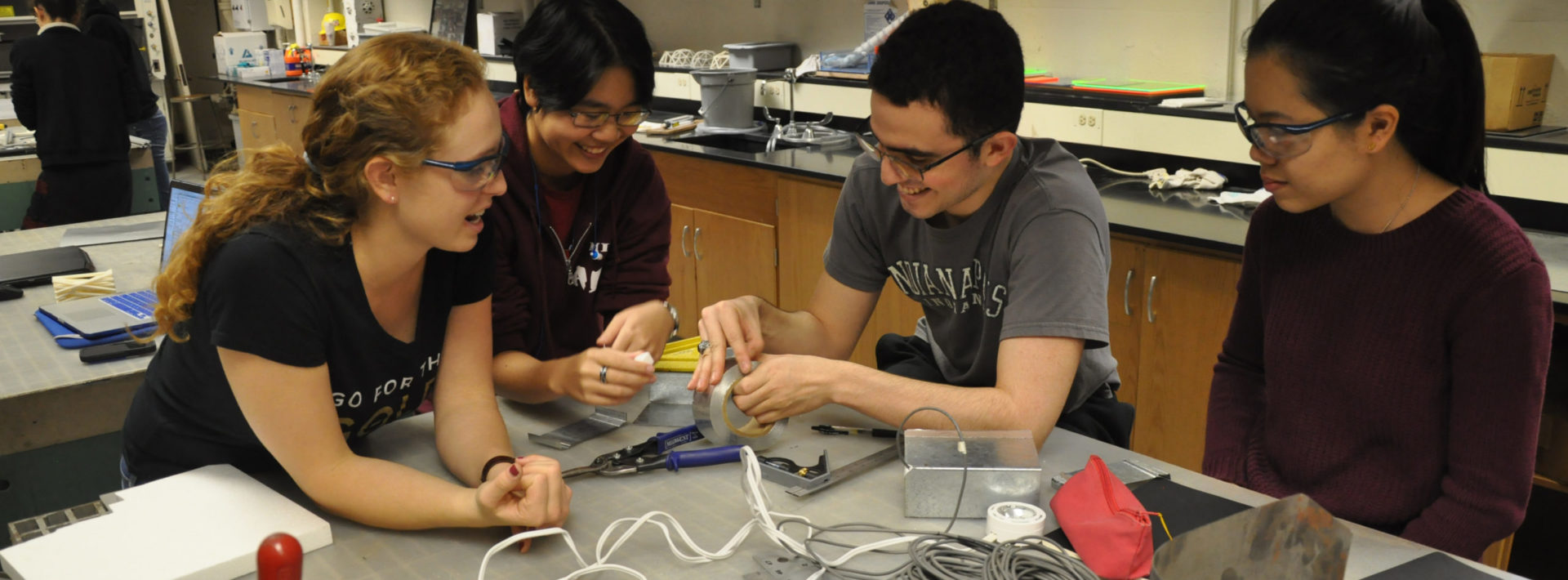Drawing inspiration from Roman structures: A glimpse into 1.102
[fusion_text]By David Wu
In The Ancient World: Rome (21H.132), a Humanities, Arts, and Social Sciences (HASS) class I am taking this semester, we recently studied the last 200 years of the Roman Republic. We learned that during this time, Rome grew from a prosperous city-state to a nation that controlled much of the Italian peninsula to the massive empire that ruled much of modern day Spain, Greece, and Northern Africa. These military success brought riches to Rome. While for the victorious leaders, usually the consuls, a life of fame and glory awaited. However, nothing demonstrated Rome’s power like the extravagant structures built with the newfound riches.
The aqueducts, Roman Forum, and Coliseum are all examples of public works projects that still stand today after nearly 2000 years. Important questions facing researchers today include “what about the design and material composition of these structures allows them to stand for so long and how to address their present state of weakening?”
Last summer, through ONE-MA3, taught by Professor Admir Masic, I applied these questions to at-risk columns in Pompeii. We spoke with conservationists at Pompeii, who gave us insight into their attempts to monitor and predict the evolution of the health of groups of columns that had begun to show signs of cracking. The factors they discussed contributed to their decisions on how to best preserve the columns, while also protecting the millions of tourists that visited the ancient city each year.
This semester, the focus of 1.102 (Introduction to Civil and Environmental Engineering Design II), an undergrad class also taught by Professor Masic, is to draw inspiration for designs from nature (bioinspiration). The idea is to understand the relationship between the nano-scale and meso-scale level properties of biological materials and the performance (i.e. stiffness, porosity, strength) of these materials.
Years of evolution have optimized biological materials for specific tasks such as breaking bark for a woodpecker’s beak or filtration for a sea sponge. If one can understand how nature designed these features, he or she can hopefully use these design elements to achieve a similar performance in man-made materials.
Most recently we addressed this idea in a column design competition. We were split into four groups, and each group’s goal was to create the strongest bioinspired column. Each column had to be less than 1” wide, 6” tall, and .5 a kilogram in mass. Every group was to create their design in a CAD software, and the columns would then be 3D printed out of a mix of rubber and plastic.
One group sought inspiration from the structure of bamboo, another from the rings of a tree, and the other from the hierarchical structure of plant cells. My group was inspired by a previous spinal injury to Nadia, one of our team members.
Our design consisted of two types of interlocking modular pieces. One was a taller solid plastic cylinder similar to bone and the other was a shorter rubber piece mimicking the disks between vertebrae.
On the day of the tests, our column performed horribly for the compressive strength test, only able to measure a compressive strength of 2.85 MPa (compared to the top group 20.2 MPa). This put us in dead last, however our column exhibited behavior unlike any of the other columns.

When put under compression, our column bent and curved at the rubber disks until the rubber finally tore. Interestingly, our column returned almost completely to its normal upright state when the compressive force was removed.
These behaviors make sense if you consider the properties of the biological material we were inspired by. The spine does support the significant weight of our heads, but it is designed for movement like running, jumping, and climbing. The flexibility of the spine allows us (well some of us) to touch our toes or throw a baseball, and it is the reason that we return to our normal height after bending over.

In our presentation to the class about our design and our column’s performance, we highlighted that while our design failed for the compressive strength test, our results were still meaningful. Perhaps, our model could be applied for structures that didn’t support a lot of weight, but were located in areas that faced frequent earthquakes.
Even so, the results of our column’s performance did confirm the traits that we already knew about the spine. It is significant to be able to link these two ideas. Experiences like this will continue to address the questions of “Why and how are the design and performance of materials linked?”.
[/fusion_text]
Share on Bluesky

